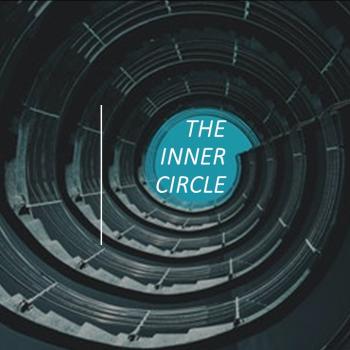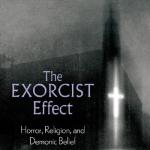
Saying 30: Jesus said, “Where there are [three], they are without God, and where there is but [a single one], I say that I am with [him]. Lift up the stone, and you will find me there. Split the piece of wood, and I am there.”
This saying is one of the more difficult ones to explain. Not so much for what it seems to be saying, but for the all of the various ways this particular saying has been translated, and re-translated, and corrupted, and corrected, over the last few years.
The Coptic version simply says this: Jesus said, “Where there are three gods, they are gods; where there are two or one, I am with him.”
Most agree that version is inaccurate.
As J. D. Crossan writes:
“Put mildly, that is not very clear, and we are cast back on the Greek of (Oxy P 1, lines 23-27). Harold W. Attridge’s recent study of that papyrus under ultraviolet light led him to the following restored translation: ‘Jesus said, “Where there are three, they are without god, and where there is but a single one I say that I am with him.”‘ He concludes that, ‘instead of an absolutely cryptic remark about gods being gods, the fragment asserts that any group of people lacks divine presence. That presence is available only to the “solitary one.” The importance of the solitary (monachos) is obvious in the Gospel. Cf. Sayings 11, 16, 22, 23, 49, 75, and 106. This saying must now be read in connection with those remarks on the “monachose.”‘ (156).”[i]
The restored, earlier Greek version reads:
Jesus said, “Where there are three, they are without God. And where there is only one, I say, I am with him. Lift the stone and there you will find me. Split the wood and there I am.”
It’s this version of the saying that we will take under consideration here.
Not only does this version square with what Jesus has said elsewhere in this Gospel, it also adds an additional element that further emphasizes the notions of “God in Everything” and “Everything is Connected” we’ve seen several times before.
Why does Jesus say, “Where there are three they are without God”? Does that literally make any sense? Especially with the idea that we are all One with God? No, it doesn’t. But, for the purposes of teaching us how to think in terms of Oneness and Connection, it does, sort of make sense.
Because if you have three separate beings, you have abandoned the notion of Oneness. What we have to do is to realize that, even if it appears to us that we have three beings, what we really have is One consciousness expressed in three (seemingly) separate beings. In contrast, Jesus shows us how to truly understand reality by adding, “And where there is only one, I say, I am with him.”
Again, the shift away from perceiving the three beings as separate is juxtaposed alongside the realization that “there is only one” and, if we can see this, then we realize that Christ is truly “with” us.
Of course, all of this continues to transcend language, because even when we say that “there is only one”, the moment we imagine that Christ is now “with (that one)”, we have succumbed to the temptation to speak as if there are still two different beings in consideration: Christ, and the “only one.”
Confusing? Yes, a little. But hopefully not if we have already started to embrace the reality of Oneness and Connection. What’s in view is our perception. Either we look and see three separate beings, and therefore remain blind to the true nature of God, or we look and see only one who is together with – but never separated from – Christ.
The latter sentence especially solidifies the saying in our minds by providing us with a beautiful mental picture of how Christ is all and in all: “Lift the stone and there you will find me. Split the wood and there I am.”
In other words, there is no where we can look where Christ is not present. Under any ordinary stone, we find Christ. In the center of any piece of wood we split in half, there is Christ.
Yes, we perceive a world of separate things and distance between various objects. This is the illusion we are surrounded by. But, in Christ, we realize that all consciousness is the one consciousness, and all flames are the same flame; every drop of the ocean is the ocean in a single drop.
Quantum physics also affirms the same reality that our perception of various forms and disparate objects is an illusion; that all objects are all different expressions of the same Quantum Field.
On the surface what we see and experience is space and time and separation between things. But at the subatomic, quantum and even spiritual levels, what we begin to see is that this perception of differences is merely a failure of our senses to experience reality as it truly is: One continuous, galaxy-wide, field of quantum energy distributed across the universe and expressed at various frequencies, intensities and modulations.
[i] From Four Other Gospels, p. 78, by John Dominic Crossan
**
Keith Giles is the best-selling author of the Jesus Un series. He has appeared on CNN, USA Today, BuzzFeed, and John Fugelsang’s “Tell Me Everything.” His latest book, SOLA MYSTERIUM: Celebrating the Beautiful Uncertainty of Everything is available now on Amazon in paperback and on Kindle.

















